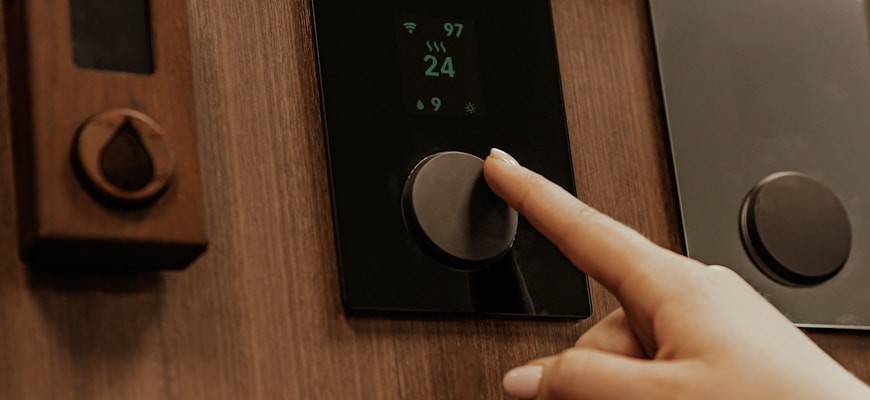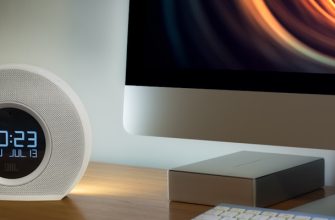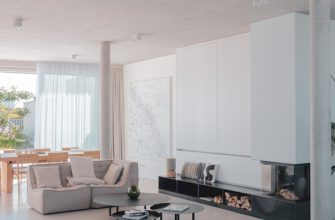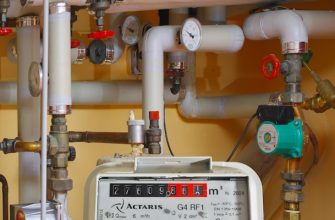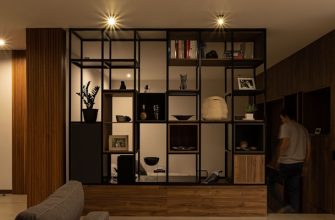Smart Solutions for Indoor Air Quality
In today’s world, ensuring optimal indoor air quality is paramount for health and comfort. Smart solutions for air quality control are revolutionizing home automation, allowing homeowners to monitor and manage their living environment effortlessly. Advanced technologies provide real-time data on air pollutants, humidity levels, and temperature, enabling users to make informed decisions.
- Air Quality Sensors: High-tech sensors continuously analyze the air for harmful substances like volatile organic compounds (VOCs), carbon dioxide (CO2), and particulate matter. These devices provide instant feedback, ensuring that the air remains clean and safe to breathe.
- Smart Ventilation Systems: Automated ventilation systems adjust airflow based on current air quality readings. By optimizing ventilation, these systems help to reduce indoor pollutants and enhance overall air quality.
- Air Purifiers: Smart air purifiers equipped with HEPA filters effectively capture airborne particles and allergens. Many of these devices can be controlled remotely, allowing users to activate purification even when away from home.
- Humidity Control: Maintaining proper humidity levels is crucial for comfort and health. Smart humidifiers and dehumidifiers can be programmed to adjust automatically, responding to changes in the environment to prevent mold growth and respiratory issues.
Integrating these smart solutions into home automation systems not only enhances air quality but also promotes energy efficiency. By monitoring the indoor environment, homeowners can reduce energy consumption while creating a healthier living space. As technology continues to advance, the possibilities for indoor air quality management will expand, making it easier than ever to maintain a safe and comfortable home.
Investing in smart air quality solutions is a proactive approach to ensuring a safe environment. With the ability to control and monitor air quality from anywhere, homeowners can breathe easier knowing that their indoor air is clean and healthy.
The Benefits of Monitoring Air Quality at Home
Monitoring air quality at home is essential for maintaining a healthy living environment. With increasing pollution levels and allergens, being aware of indoor air conditions is more crucial than ever. Home automation systems offer an efficient way to track air quality, allowing for timely interventions to improve it.
- Health Benefits: Regular air quality monitoring helps in identifying pollutants, allergens, and toxins that can affect respiratory health. By keeping track of indoor air quality, families can reduce the risk of allergies and respiratory diseases.
- Improved Comfort: Maintaining optimal air quality contributes to overall comfort within the home. Automated systems can adjust ventilation or filtration based on real-time data, ensuring a pleasant living space.
- Energy Efficiency: Smart air quality monitors can optimize energy usage by controlling HVAC systems. This not only reduces energy bills but also promotes a more sustainable living environment.
- Informed Decisions: By continuously tracking air quality, homeowners can make informed decisions regarding air purifiers, humidifiers, or dehumidifiers to enhance indoor conditions.
- Peace of Mind: Knowing that air quality is being monitored alleviates concerns about hidden pollutants. This peace of mind is invaluable for families with children or individuals with health sensitivities.
In conclusion, integrating air quality monitoring into home automation systems provides numerous advantages. From health benefits to energy efficiency, the ability to control and improve air quality is now firmly in the hands of homeowners. Embracing this technology leads to a healthier, more comfortable living environment.
How to Use Technology for Better Breathing
Utilizing technology for enhanced breathing quality can significantly improve overall health. Home automation systems offer innovative solutions for monitoring and controlling air quality. By integrating smart devices, homeowners can create a more breathable environment, ensuring cleaner air for all family members.
- Smart Air Purifiers: These devices actively filter out pollutants and allergens, providing real-time air quality data. Equipped with sensors, they adjust filtration levels based on current air conditions, ensuring optimal breathing space.
- Humidity Control: Maintaining ideal humidity levels is crucial for respiratory health. Smart humidifiers and dehumidifiers can be programmed to maintain the right moisture balance, preventing dryness or excessive dampness, which can trigger allergies.
- Air Quality Monitors: These tools offer continuous tracking of indoor air quality. Users can receive alerts about changes in pollutant levels, allowing for timely interventions to enhance air purity.
- Smart Ventilation Systems: Automated ventilation systems can regulate airflow, bringing in fresh air while expelling stale air. This feature is essential for maintaining a healthy indoor atmosphere.
By employing these advanced technologies, individuals can take control of their indoor air quality. A proactive approach to managing air pollutants leads to improved respiratory function and overall well-being. The integration of technology in home automation not only provides convenience but also promotes a healthier lifestyle.
In conclusion, leveraging technology for better breathing is a vital step towards enhancing air quality at home. With smart devices that monitor and adjust air conditions, achieving a healthier environment becomes effortless. Embracing these innovations ensures that families breathe easier, leading to a more comfortable living space.
DIY Air Quality Management: Tools and Tips
Maintaining optimal air quality in a home is essential for health and comfort. DIY air quality management can be accomplished using various tools and techniques. Effective air quality control not only improves indoor environments but also enhances overall well-being.
- Air Quality Monitors: Investing in an air quality monitor is a crucial first step. These devices measure pollutants such as particulate matter, volatile organic compounds (VOCs), and carbon dioxide levels, giving homeowners real-time data on indoor air quality.
- Ventilation Systems: Proper ventilation is key to controlling air quality. Installing exhaust fans in kitchens and bathrooms can help eliminate moisture and odors, while fresh air intakes can improve overall ventilation.
- Air Purifiers: Air purifiers equipped with HEPA filters effectively remove allergens, dust, and other airborne particles. Regular maintenance of these devices is necessary to ensure optimal performance in air quality management.
- Houseplants: Certain houseplants can naturally improve air quality. Plants such as spider plants, peace lilies, and snake plants filter toxins and release oxygen, contributing to healthier indoor air.
- Humidity Control: Maintaining appropriate humidity levels is vital for air quality. Dehumidifiers can reduce excess moisture, while humidifiers can add moisture to dry air, creating a balanced environment.
Regular monitoring and adjustments are key to successful DIY air quality management. By utilizing the right tools and strategies, homeowners can take control of their indoor environments, ensuring cleaner and healthier air for everyone.
Integrating Home Automation for Healthier Living Spaces
Integrating home automation into daily living has transformed the way people manage their health and well-being through enhanced air quality control. Smart home systems allow for real-time monitoring of indoor air quality, ensuring that every breath taken in the home is healthier and more refreshing.
Home automation technology includes air quality sensors that detect pollutants, humidity levels, and temperature fluctuations. These sensors are vital for maintaining a comfortable and healthy living environment. By utilizing home automation, homeowners can receive alerts about poor air conditions, enabling timely actions to improve air quality.
- Smart thermostats can adjust temperature settings automatically based on occupancy and air quality data.
- Air purifiers integrated with smart technology can operate independently, activating when air quality drops below a certain threshold.
- Smart ventilation systems can optimize airflow, ensuring fresh air circulation while minimizing energy consumption.
Furthermore, home automation systems can be programmed to create specific routines that promote healthier living spaces. For example, scheduling air purifiers to run during peak pollen seasons or when the air quality index is high can significantly reduce allergens and harmful particles in the home.
In addition to improving air quality, integrating home automation can lead to increased energy efficiency. Automated systems can help manage energy consumption by ensuring that heating, cooling, and air purification systems operate only when necessary, contributing to both environmental sustainability and cost savings.
Ultimately, the combination of smart technology and air quality control not only enhances the comfort of living spaces but also plays a crucial role in promoting overall health and well-being. With the ability to monitor and manage air quality through home automation, individuals can take proactive steps towards achieving a cleaner, healthier home environment.
The Future of Home Environments: Air Quality at Your Fingertips
Home automation technology has revolutionized the way individuals manage their living spaces, particularly in the realm of air quality control. With smart devices at one’s fingertips, monitoring and improving indoor air quality has never been easier. Modern systems can detect pollutants, allergens, and humidity levels in real-time, allowing homeowners to make informed decisions.
Integrating air quality monitors with home automation systems enables seamless adjustments to ventilation and purification processes. This not only enhances comfort but also promotes health and well-being. The ability to control air quality enhances the overall living environment, ensuring that every breath taken indoors is clean and safe.
- Smart air purifiers can automatically adjust settings based on air quality readings.
- Automated ventilation systems improve airflow when indoor pollutants are detected.
- Mobile applications provide real-time data and alerts for air quality changes.
- Integration with HVAC systems allows for optimized energy use while maintaining air quality.
The future of home environments lies in the hands of technology, where air quality is no longer an afterthought. With smart homes equipped with air quality control features, residents can enjoy peace of mind knowing they have the tools to maintain optimal air conditions. The convenience of controlling air quality from anywhere adds an unprecedented level of comfort to daily life.
As technology continues to advance, the possibilities for enhancing air quality through home automation are limitless. Homeowners are encouraged to explore innovative solutions that not only prioritize air quality but also contribute to a sustainable future. Taking charge of indoor air quality is not just a trend; it is a necessary evolution in modern living.
